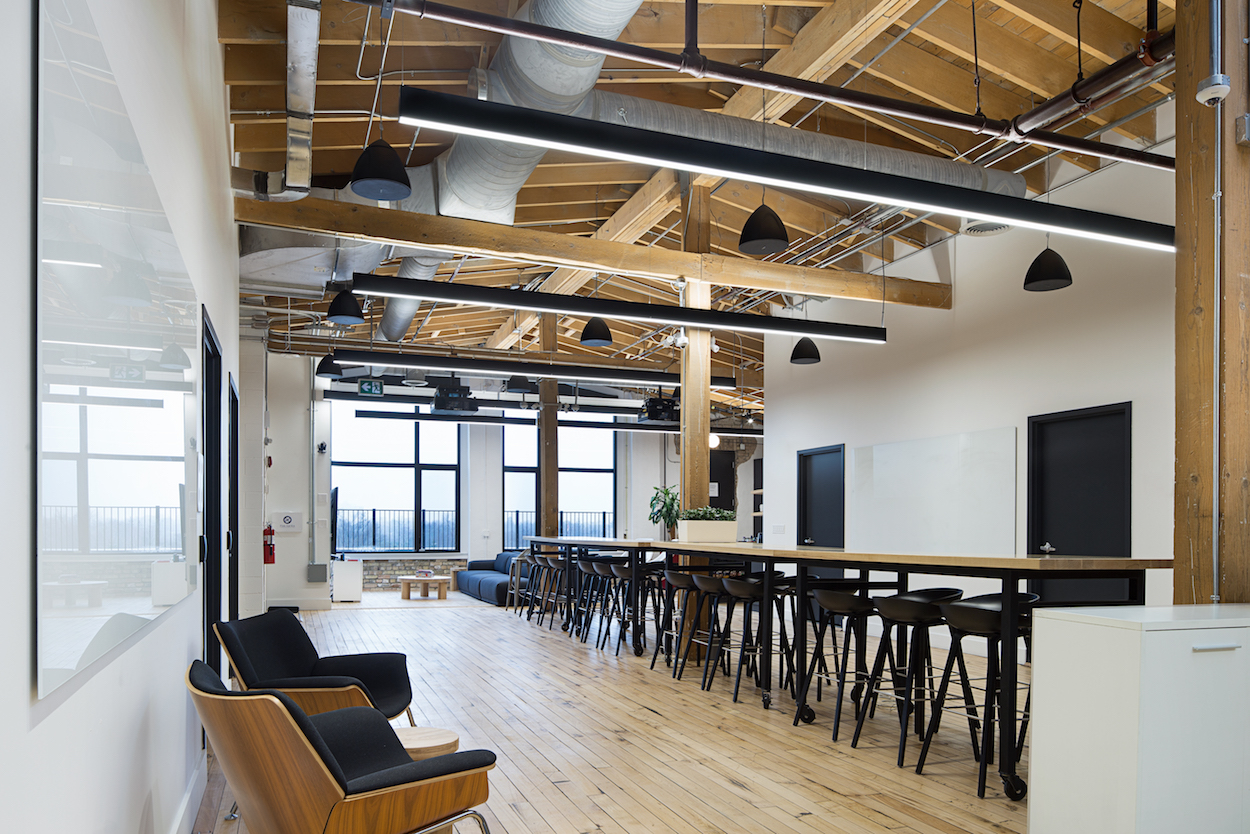Office Design and the Insight of Tech Companies
Smart Leaders Understand That Interior Space Impacts Corporate Culture
A sleek office space has become synonymous with some of the biggest tech companies in the world. While Silicon Valley is typically the region people think of first when it comes to this trend, tech offices across the world are following suit.
Why? What do these tech executives know about office space that the rest of us are missing?

Mark Zuckerberg and Jeff Bezos know that “cool” offices aren’t just fun, they are smart business. These modernized, mostly open spaces aren’t just designed to look good in brochures and magazines (which they do). They’re also important to attract top talent – and help employees perform at their best once they’ve been hired.
When courting new staff, salary and benefits are only part of the package. The tech sector is highly competitive, and as a result, the best minds in the business are looking for additional perks. One of them is coming into an office that not only has “wow” factor, but also lines up with their preferences.
How Physical Spaces Affect Performance
Multiple studies, like this one from Science Direct in 2011, have found the office’s physical environment is at the top of the list when it comes to optimizing an employee’s output. After all, those who look forward to spending time in the office each day tend to be happier, which is important to being productive.
While open spaces in the office are popular in the tech sector, creating a multiple floor plan is also a key. That means designing spaces to accommodate collaboration, but also to encourage focus.
Take for example the Square Canada office renovation project in Kitchener, Ontario. When redesigning a heritage space to retain the original charm, it went beyond simply creating open space. It also incorporated a bright boardroom, as well as creating smaller meeting nooks and even soundproof booths for enhanced privacy during phone calls.
Employees also need a space that meets their other needs: for example, unless there’s a functional kitchen, staff may be inclined to spend more time off-site, which can impact productivity. Spaces for casual socializing are also helpful to allow an “escape” from the office within the office.
While some tech offices have ping-pong tables or even slides, they’re not necessary to be cool. However, the most effective tech office designs create a sense of freedom while also saying “we mean business.”

Building On Company Culture
When shopping for a company to work for, tech-savvy candidates often look at the company’s culture as one of the top criteria. The culture is basically a company’s personality, and it has many facets – including its dedication to providing a healthy work/life balance for its employees.
The physical environment is just one of the markers of company culture, but it’s a big one. A candidate who values open collaboration and innovation, for example, will probably not perform as well in a company that has a rigid and formal office environment with cubicles and dividers.

If a person works in an environment that doesn’t suit their personality, they’re less likely to be engaged or produce their best work. They are also less likely to stay in the position long-term. This is why it’s also important for companies to create a work environment that reflects their desired work culture, in order to grab attention from the talent they’re seeking.
An office space should also be an extension of a corporate identity. Showing “who you are” is one way top companies attract top candidates. If the goal is to appear cool and future-facing, which is the case with most tech companies, a drab and outdated office space will not do much to support this. (Even the right art can make a difference.)
Maximizing Return On Investment
ROI is always an important factor when renovating an office space. When measuring these kinds of metrics over the long-term, a company can look at several areas – including increased employee productivity, as well as making better use of space and even becoming more energy-efficient.
There’s another way the designer-builder team can increase any company’s ROI through dynamic office design. Consider a prospective client that is coming into the space for a meeting – they are more likely to do business with a company that obviously pays attention to its company culture. This is because buying decisions are largely based on visuals and emotions, which could translate into more contracts in the long run.

When a prospective client sees a high-quality renovation, they will potentially judge the products and services using the same benchmark. Consider as a consumer whether you’d be more likely to buy something from a poorly maintained space versus one that’s obviously had some thought and resources put into it.
Quality Office, Quality Employees
In short, the quality of the office reflects the level of quality a company is striving to achieve and the type of clients they’re after – and the kind of employees they want under their roof to help them succeed.
Not only that, but an updated office space can help improve the productivity of the talent once you’ve hired them, meaning it’s a worthy investment. Office space is an extension of company culture, and employees who are comfortable with the environment are more likely to stay on board for the long-term.
